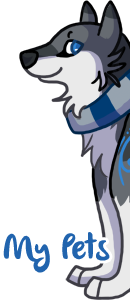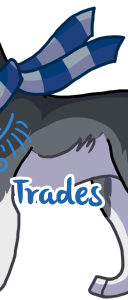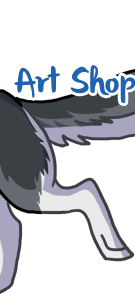♥ Welcome to the World of Chaikas! ♥
STATUS: Last auction has all been autobought off, thank you everyone! Keep your eye on the thread for another set coming ;D
Well hello there! I used to have a thread on the Zoo a few months ago offering these Chaikas for adoption and have decided to make some up for auction and see if they’re successful! XD
Species:
Chaika, pronounced (as in “ch” in chair) Ch-aiy-kah (singular term). Chaikas (plural term)
Chaikas are a rare subspecies of deer with singular horns.
Behaviours + Eating habits:
Due to their small size, Chaika generally travel in large herds of 10-15 for protection. These herds are usually led by a dominant buck with does and kids making up the rest of the herd.
Chaikas will mate once a year during the warm summer months and can produce 3-4 offspring each time. In order to maintain the genetic variations in the species, Chaikas do not breed for life.
Chaikas are herbivorous and will eat anything from roots, young shoots, branches, leaves and fruits.
Bonding/Companions:
Most Chaikas are extremely shy, introverted creatures and require long periods of time in order to feel comfortable with another Chaika or human owner. A characteristic occurrence in the Chaikas herd dynamics is the presence of "companions". Often, an individual Chaika will bond with another Chaika (regardless of gender) in the herd and these two will be inseparable till death. These bonds generally form during the first 2 years of their lives but there have been rare cases of some Chaika bonding later on.
The other Chaika will act as many roles toward his/her companion; guardian, family member, nanny to the kids.
It is possible for Chaikas to form bonds/companionship with animals of different species but this is a rare occurrence.
Habitat:
Chaikas are extremely adaptable and will live almost anywhere in the world as long as there’s water and food for them.
Lifespan:
20-30 years (mature for reproduction by 1 year of life)
NOTE: Baby Chaikas do NOT have horns. They only grow their horns once they reach maturity (i.e. by 1 years old)
Colours:
The coat colours of Chaikas can range anywhere from bright red to pitch black. In general, the colour of the Chaika is dependent on their habitat. In order to survive, the Chaikas in that particular area would have bred and adapted to the point where they display optimum colouring to provide them the best camouflage protection from predators. For example, Tundra Chaikas would have bright white coats with equally pale markings while Rainforest Chaikas would display more earthy coloured coats and markings. It is very rare to find a Chaika with no markings and hence, an unmarked Chaika is considered a genetically mutated individual.
Genetic Mutations:
Generally, a deviation from the Characteristic Traits listed above is considered a genetic mutation. Depending on the mutation, most Chaikas are able to live the average lifespan with little deficit in function. Some mutations include:
- Lack of horn
- Blindness
- Feathered wings
- Lack of feathers on the tips of the ears (deafness)
- Albinism/Partial albinism
- Lack of markings or very little markings
- Asymmetrical markings
- Dwarfism (height of withers is less than 40cm)
- Hooves coloured any other colour but grey/black
STATUS: Last auction has all been autobought off, thank you everyone! Keep your eye on the thread for another set coming ;D
Well hello there! I used to have a thread on the Zoo a few months ago offering these Chaikas for adoption and have decided to make some up for auction and see if they’re successful! XD
Species:
Chaika, pronounced (as in “ch” in chair) Ch-aiy-kah (singular term). Chaikas (plural term)
Chaikas are a rare subspecies of deer with singular horns.
Characteristic Traits:
1) Small short body, height of the withers can range from 45cm (e.g. does) to 60cm (in large bucks)
2) Stocky legs
3) Single horn between the eyes
4) Ears are replaced by long cartilaginous tendrils tipped with a long feather on each end. Sound is picked up by the fine hairs on the feather and is detected by the hyper sensitive cartilage as different sounds.
5) Cloven hooves
6) Feathered fetlocks (NO feathering on hind legs)
** NOTE: markings are almost always symmetrical. The only case in which a Chaika will have asymmetrical markings would be a genetic mutation.
Behaviours + Eating habits:
Due to their small size, Chaika generally travel in large herds of 10-15 for protection. These herds are usually led by a dominant buck with does and kids making up the rest of the herd.
Chaikas will mate once a year during the warm summer months and can produce 3-4 offspring each time. In order to maintain the genetic variations in the species, Chaikas do not breed for life.
Chaikas are herbivorous and will eat anything from roots, young shoots, branches, leaves and fruits.
Bonding/Companions:
Most Chaikas are extremely shy, introverted creatures and require long periods of time in order to feel comfortable with another Chaika or human owner. A characteristic occurrence in the Chaikas herd dynamics is the presence of "companions". Often, an individual Chaika will bond with another Chaika (regardless of gender) in the herd and these two will be inseparable till death. These bonds generally form during the first 2 years of their lives but there have been rare cases of some Chaika bonding later on.
The other Chaika will act as many roles toward his/her companion; guardian, family member, nanny to the kids.
It is possible for Chaikas to form bonds/companionship with animals of different species but this is a rare occurrence.
Habitat:
Chaikas are extremely adaptable and will live almost anywhere in the world as long as there’s water and food for them.
Lifespan:
20-30 years (mature for reproduction by 1 year of life)
NOTE: Baby Chaikas do NOT have horns. They only grow their horns once they reach maturity (i.e. by 1 years old)
Colours:
The coat colours of Chaikas can range anywhere from bright red to pitch black. In general, the colour of the Chaika is dependent on their habitat. In order to survive, the Chaikas in that particular area would have bred and adapted to the point where they display optimum colouring to provide them the best camouflage protection from predators. For example, Tundra Chaikas would have bright white coats with equally pale markings while Rainforest Chaikas would display more earthy coloured coats and markings. It is very rare to find a Chaika with no markings and hence, an unmarked Chaika is considered a genetically mutated individual.
Genetic Mutations:
Generally, a deviation from the Characteristic Traits listed above is considered a genetic mutation. Depending on the mutation, most Chaikas are able to live the average lifespan with little deficit in function. Some mutations include:
- Lack of horn
- Blindness
- Feathered wings
- Lack of feathers on the tips of the ears (deafness)
- Albinism/Partial albinism
- Lack of markings or very little markings
- Asymmetrical markings
- Dwarfism (height of withers is less than 40cm)
- Hooves coloured any other colour but grey/black














